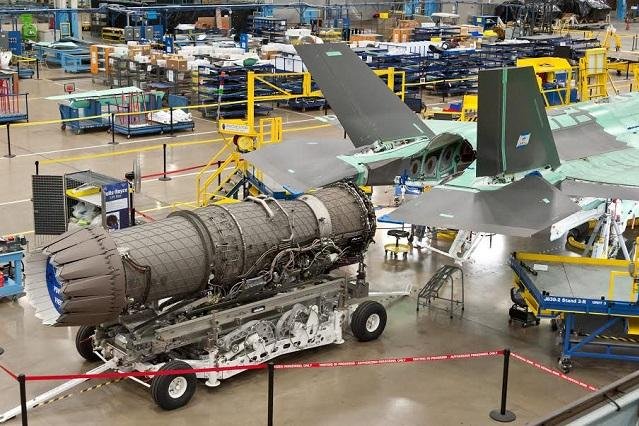RTX’s Pratt & Whitney received a $1.31 billion contract on Sept. 30 to continue maturing its Engine Core Upgrade for the F-35 fighter’s F135 engine. If the program goes according to predictions, the first operational engine should be flying in 2029.
The cost-plus-incentive fee contract covers “design, analysis, rig testing, engine test preparation, developmental hardware, test asset assembly, air system integration, airworthiness evaluation and product support” as the ECU continues development. The Navy, which oversees F-35 contracting at this time, made the award.
The contract comes two months after Pratt said it completed the ECU’s preliminary design review, “affirming the ECU is on schedule.” The upgraded powerplant is intended to increase the durability of the engine, the life expectancy of which suffered in recent years as requirements increased and new equipment was added to the F-35 fighter. It also supports the additional demands that will be placed on the engine as the F-35’s Block 4 upgrade proceeds. The upgrades will require more engine performance, cooling, and electrical power.
Pratt said in July that it expects to conduct the Critical Design Review on the ECU—one of the last steps before fabrication begins—in mid-2025.
Jill Albertelli, president or Pratt’s military engine business, said the contract is “critical to continuing our forward momentum on this program.”
The award “allows us to continue work in the risk reduction phase with a full-staffed team focused on design maturation, aircraft integration, and mobilizing the supply base to prepare for production.”
The F-35 Joint Program Office has decided to make Lockheed Martin, the F-35 prime contractor, the “Lead Systems Integrator” for what is now known as the Power Thermal Management Upgrade to the Power and Thermal Management System, or PTMS, for the F135 engine.
In an Oct. 1 statement, the JPO said said that after “extensive market research” this year, only Lockheed was found to be capable of performing this function.
“Contract award for the upcoming phase of the PTMU program is expected in Fall 2024,” the JPO said. “We will work with Lockheed Martin throughout the entire process to ensure all known PTMU solution options are evaluated for performance and economical retrofitability to existing aircraft; bringing maximum capability to the warfighters while accounting for cost.”
It was not clear from the JPO’s statement whether Lockheed will select the PTMS contractor.
The Government Accountability Office has said a new PTMS is needed because the additional electronics that are part of the Block 4 upgrade will require a more robust cooling system. The existing system is “overtasked,” the GAO said in a May 2023 report, and requires the F135 engine “to operate beyond its design parameters,” increasing wear and tear on the powerplant and requiring excessive maintenance costs of up to $38 billion over the planned 58-year life of the F-35 program.
The existing PTMS is made by Honeywell, but Collins Aerospace—which, like Pratt, is part of RTX—has readied an Enhanced Power and Cooling System (EPACS) proposal for a possible competition. Collins said last year it could be ready to enter an engineering and manufacturing development effort for EPACS as early as mid-2024.
The ECU was selected as the way ahead for the F-35’s propulsion needs after the Pentagon chose not to adopt either of the Adaptive Engine Transition Program (AETP) powerplants developed by Pratt and GE Aerospace. The AETP engines weren’t compatible with the Marine Corps F-35B short take-off/vertical landing variant and would have been difficult to adapt to the Navy’s F-35C version as well. The AETPs were expected to deliver as much as a 30 percent increase in performance over the F135.
Air Force Secretary Frank Kendall said last year that one of his main regrets about the fiscal 2025 budget request was that the service couldn’t afford to develop and produce the AETP for its own F-35 fleet. The Pentagon insisted on the ECU instead to preserve commonality among the variants for all U.S. and foreign users of the fighter.
Pratt insists the ECU will take advantage of many AETP innovations.
A Pratt spokesperson said the company has delivered “more than 1,200 F135 production engines, with more than 900,000 engine flight hours recorded.”


